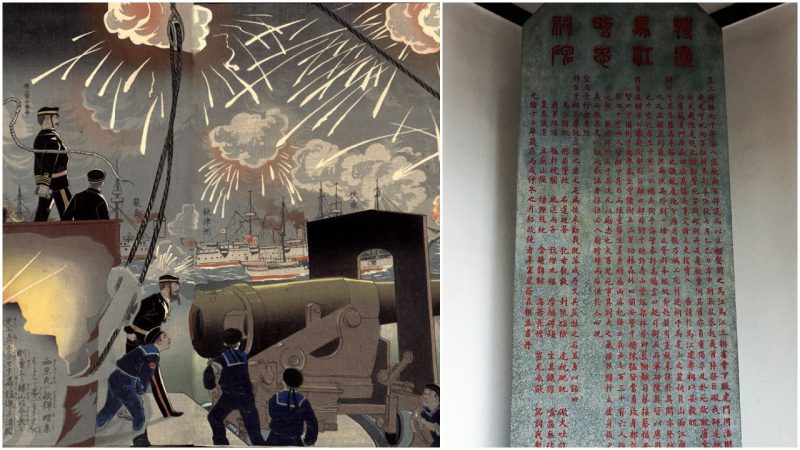The First Sino-Japanese War was a major test for the Japanese military. Both its modernizing Army and Navy had yet to be fully tested in war, and the Japanese sought to fix that in the most practical way possible.
With the nation clamoring for imperial expansion, Japan went to war against China. While the Army fought through Korea and Manchuria, the Navy proceeded to dominate the Pacific Ocean, even defeating a Chinese fleet feared for its modernization. Both Navy’s true test was the Battle of the Yalu River, September 17, 1894, where the new Japanese Navy faced the Beiyang Fleet.
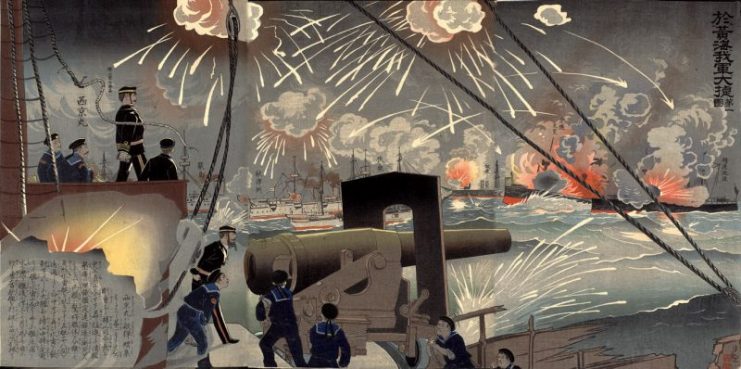
The Chinese Beiyang Fleet sported state-of-the-art German built warships, with the new Japanese Navy consisting primarily of vessels bought from or built by the British. Despite theoretical technological superiority, the Chinese Navy suffered from an archaic command structure and coordination.
Much like the rest of the Qing Dynasty, a thin veneer of modernity covered the outdated institutions of the past. The Japanese Navy, however, had adapted and modernized its command structure along with its naval forces, allowing better coordination of their smaller vessels.
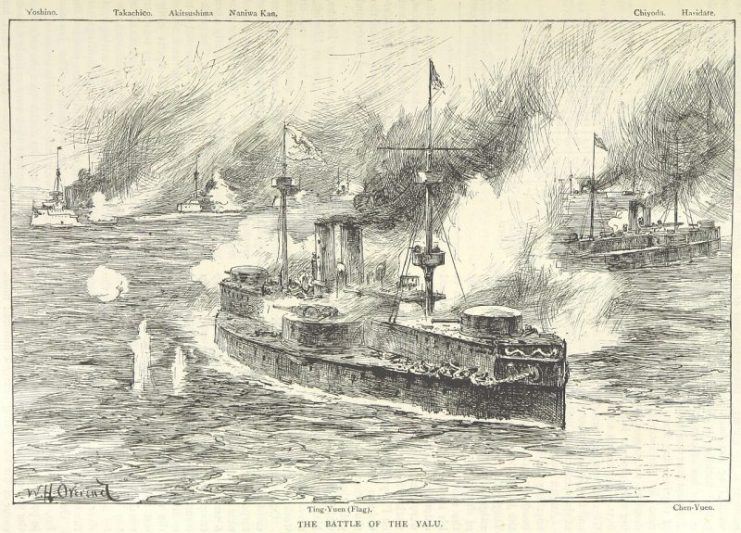
The two fleets came to blows following the escort of troop movements. The majority of the Chinese vessels had their big guns mounted forward rather than to the side, so the Chinese Admiral, Ting Ju-ch’ang, adopted a line abreast formation to engage the advancing Japanese, moving in pairs as they went.
The two battleships Ting Yuen and Chen Yuen took up position in the center of the line, with cruisers to the front and behind. Supporting the battleships were eight cruisers, two torpedo boats, and two gunboats.
The Japanese Admiral Ito Yugo, his fleet composed primarily of cruisers armed with 4- and 6-inch guns and gunboats, faced a fleet of vessels mostly armed with 8-inch guns. Though the Chinese had larger guns, and the few big guns that the Japanese did have were extremely slow firing, the bulk of the Japanese naval guns were new quick-firing guns, allowing for a faster rate of fire than their Chinese counterparts.
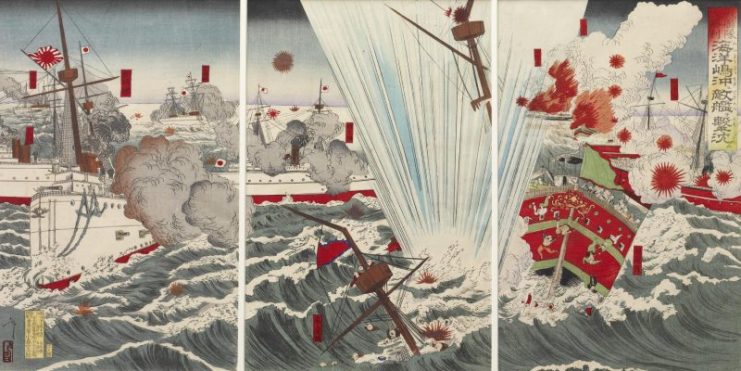
Once the Chinese spotted the Japanese ships, they built up steam and headed south-west. The Japanese, coming from the south, responded by turning to port to attempt to circle around the right-hand side of the Chinese vessels. The Ting Yuen opened fire first, and Admiral Ting, standing on the flying bridge at the time, was wounded by the blast of his own guns.
The Chinese fire failed to inflict significant damage on the Japanese, who opened fire at 3,000 yards. Concentrating their fire on the Chinese right, the cruisers Chao Yung and Yang Wei were quickly set ablaze. The Chao Yung promptly sank, while the Yang Wei ran aground on a reef.
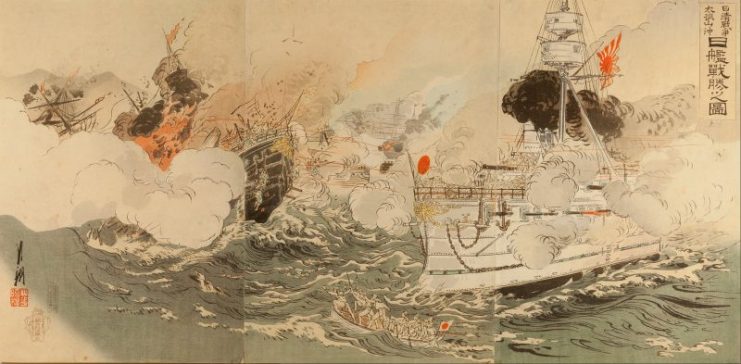
Several ships in the Chinese fleet attempted to flee in the wake of Japanese fire, some successfully, some not. In short order, only the two battleships and a handful of cruisers and torpedo boats remained to fight. The rear line of the Japanese fleet sustained heavy fire in response to their early success, with the cruiser Hiei forced to retreat.
The Saikyo suffered four hits from the enemy battleship’s 12-inch shells, losing the bulk of her steering ability in the process. The Akagi suffered heavy casualties from Chinese shells but managed to set the enemy cruiser Lai Yuen ablaze in return.
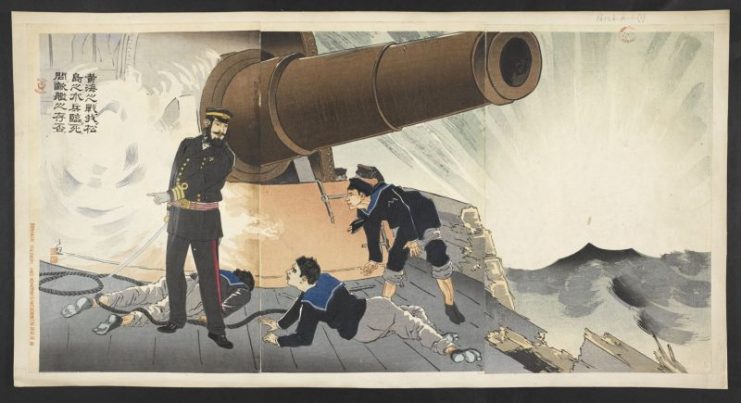
In response to the devastating firepower of the Chinese, the Japanese concentrated their own fire on the enemy battleships. By 3:30 pm, the Chinese battleship Chih Yuen was sunk, and King Yuen capsized after having to flood its magazine. With night falling, the Chinese torpedo boats still posed a viable threat. The Japanese lacked their own torpedo boats, so Admiral Ito withdrew from the battle.
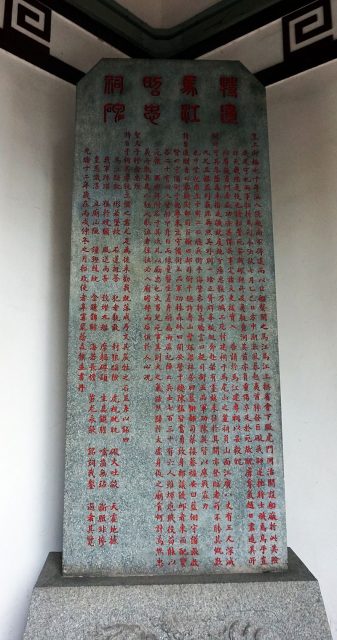
All told, the Chinese suffered 850 dead and wounded, with half their vessels sunk and the remaining ships requiring urgent repairs at Port Arthur. The Japanese suffered around 300 killed and wounded, and all their vessels managed to remain afloat.
It was an impressive first showing for the Japanese Navy, who managed, with smaller vessels mounting smaller guns, to outmaneuver and deliver a greater rate of fire than the larger Chinese ships sporting bigger guns. Japanese superiority in training and tactics also played a part.
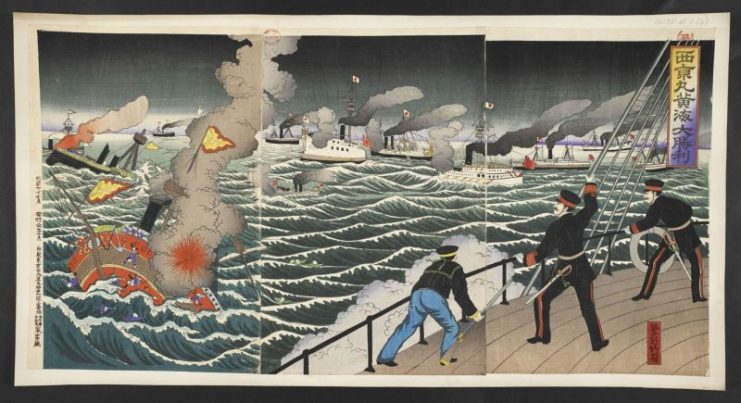
The Imperial Japanese Navy had not only survived the first major naval battle since 1866, it had won it, proving once again that Japan had succeeded to modernize where China failed. How each nation would respond to such battles, and the war overall, would set the stage of Pacific politics for the next century.
